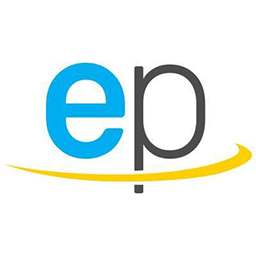Electrically conductive flexible polyurethane adhesive cures at room temperature
11-03-2015 |
Intertronics
|
Design Applications
Available now from Intertronics, Polytec PU 1000 is a single-part adhesive
which cures quickly at room temperature to a flexible,
electrically-conductive polymer. It can replace traditional epoxies which
are rigid and require thermal processing, giving production efficiencies and
enabling new applications where pliability and conductivity is important.
Polytec PU 1000 addresses applications in die attach, bonding of components
in hybrid circuit applications and surface mount technology (SMT); areas
where silver filled electrically conductive adhesives have been used for
many decades. typically such adhesives are epoxy-based, two-component or
premixed and frozen single-component systems, but now the Polytec PU 1000
polyurethane option provides a flexible bond and cost saving and performance
advantages in the production process when compared to a standard two-part
conductive epoxy adhesive. There is the simplicity of one-part application
without mixing and an indefinite pot life with rapid cure at room
temperature, e.g. 10 minutes at 23C compared to 15 minutes at 120C for a
typical two- part epoxy.
Compared to soldering, traditional epoxy-based isotropic conductive
adhesives (ICA´s) offer lower processing temperatures, low volume
resistivity, good temperature stability (withstanding reflow processes),
excellent mechanical properties and chemical resistance. These advantages
have made silver filled epoxies a reliable standard material for electrical
interconnections in the electronics industry.
However, one significant disadvantage of epoxies is the high demand and
overhead they place on the production process. The automated application of
two-part adhesives requires suitable metering and mixing equipment;
single-component, premixed and frozen adhesives require a sophisticated
supply chain and storage to ensure an enduring temperature of at least -40C.
Another disadvantage of both these systems is the limited processing time
(pot life) after mixing or thawing of the adhesive. After application, to
obtain their optimum electrical and mechanical properties, traditional
epoxies should be cured at elevated temperatures (typically at 120C - 150C).
Seeking to provide a superior solution with both performance and process
efficiency advantages, Intertronics and manufacturers Polytec PT have
introduced the PU 1000 formulation which can be considered as a very
interesting alternative to epoxy-based adhesives in various applications.
Polytec PU 1000 is a single-component, silver filled, paste adhesive, which
can be both stored at room temperature and cured quickly at room
temperature. It is flexible and elastic, which makes it ideal for bonding of
flex-circuits, temperature-sensitive substrates or substrates with highly
dissimilar coefficients of thermal expansion. It has found applications in
smart cards and RFID circuitry, where cure can be effected in seconds. It
may find interesting applications in wearable technology - clothing and
accessories incorporating computer and advanced electronic technologies.
Performance of PU 1000 is considered 'excellent' for the electrical contact
of both active and passive components, especially when coupled with its ease
of processing and high flexibility. The adhesive can be dispensed
automatically or applied manually and has rheological properties which are
particularly suitable for the requirements of the jet type dispensers. It is
suitable for electrically conductive bonding and coating applications on
absorbing substrates like fabric, paper, leather, cork and non-absorbing
substrates like glass, ceramics, PMMA, metals and most plastics, says the
company.
By Electropages
Electropages is a trusted source of news and insights from the global electronics industry. With a dedicated team of experts and editors, Electropages delivers in-depth articles, product updates, and market trends across sectors such as embedded systems, IoT, connectors, and power solutions. Our mission is to empower engineers and professionals with the knowledge they need to innovate and succeed in a rapidly evolving technological landscape.

